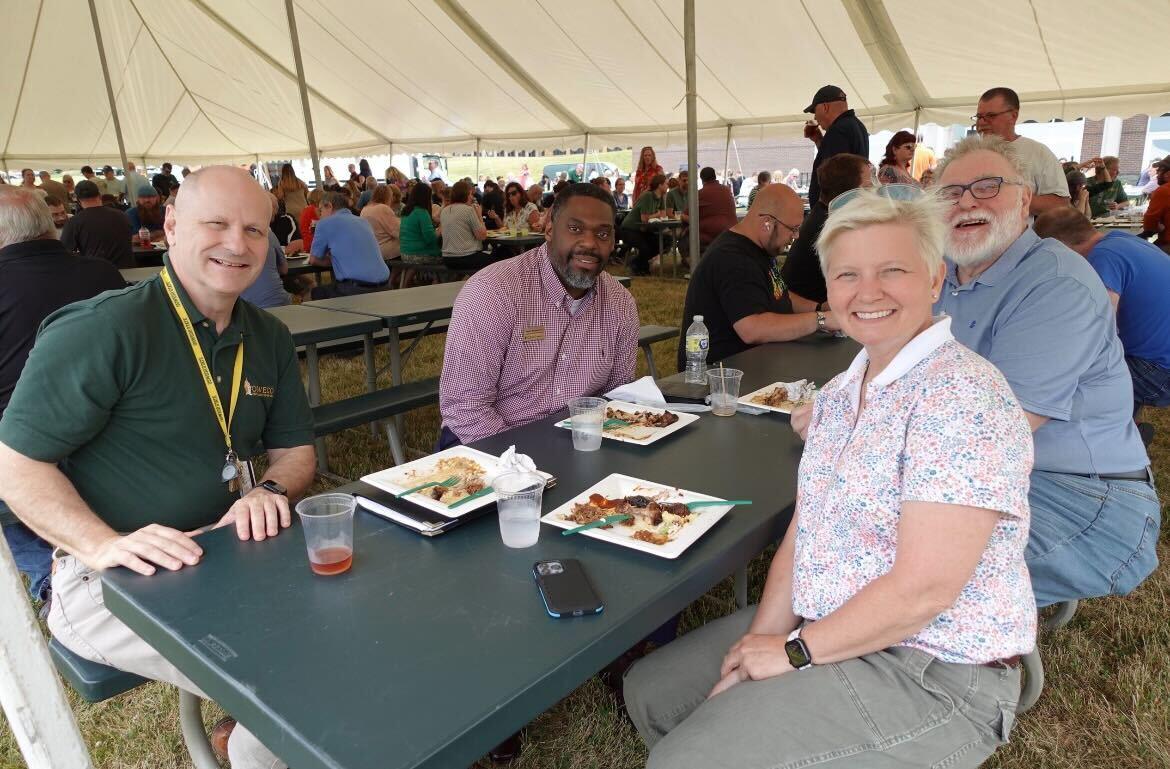The recent Campus Appreciation BBQ was a remarkably sustainable event that generated only a half pound of trash that could not be composted or recycled. Organizers credited Mary Toale, the college’s Officer in Charge (front right, shown during the event), for encouraging them to commit to a very sustainable gathering feeding more than 500 people.
When members of the SUNY Oswego family came together for the Campus Appreciation BBQ on July 13, the event featured food, fun, fellowship – and environmentally friendly figures thanks to sustainable planning.
Attracting more than 500 attendees, the efforts bore fruit in generating only a half pound of “true trash” with the vast majority of items diverted into green practices, said Kate Spector, the college’s sustainability coordinator.
“In total, we had 7.5 pounds of recyclables, 220 pounds of organic waste to be composted and a mere 0.5 pounds of true trash … resulting in an impressive diversion rate of 99.8 percent,” Spector said.
Employees also were allowed to take leftovers home to reduce food waste.
Spector said it started with Mary Toale, the college’s Officer in Charge, and Stephen McAfee, executive director of Auxiliary Services, committing to be as sustainable as possible and making it happen. McAfee said the diversion rate exceeded even his ambitious goal.
The Sustainability Office and Auxiliary Services already work together for a successful composting effort, where food waste from dining halls go to an Oswego County facility to be converted into compost. The partnership is at around 30,000 pounds and counting.
“Kate and her team take about the volume of a regular dumpster’s worth of food out of the waste stream every week,” McAfee said. “It’s remarkable.”
Both McAfee and Spector praised Toale’s leadership in encouraging this initiative for the BBQ and going forward –- with the campus Opening Picnic in August being the next big example on an even larger scale.
Showing and supporting sustainability
“This was the chance to show if everybody thought about their actions, we could make that much of a change and divert that much out of the waste stream,” McAfee said.
“It was not an afterthought,” Spector said. “That was planned. If you think about what you’re going to eat, how you’re going to serve it, what kinds of utensils you’ll use, this is what happens.”
This kind of execution requires commitment and resources to make it happen successfully, but it shows what is possible and helps for even more sustainable planning – knowing that these efforts are all about the future.
“It was a conscious choice the campus made, that if we’re going to be in this, we’re going to be in this,” McAfee said. “It’s about a 15 percent cost increase in finding sustainable materials, particularly flatware. But as more products become available, costs will go down.”
In context, the annual campus-wide diversion rate has been as high as 15 to 20 percent during the last decade. “Had we held this BBQ again using the same products, without sending the organics to be composted, our diversion rate would have been 3.3 percent,” Spector noted.
“We’re ready for this level of commitment,” Spector added. “We’ve proven this level of diversion can be handled and managed, so it’s time for us to change how we do things.”




